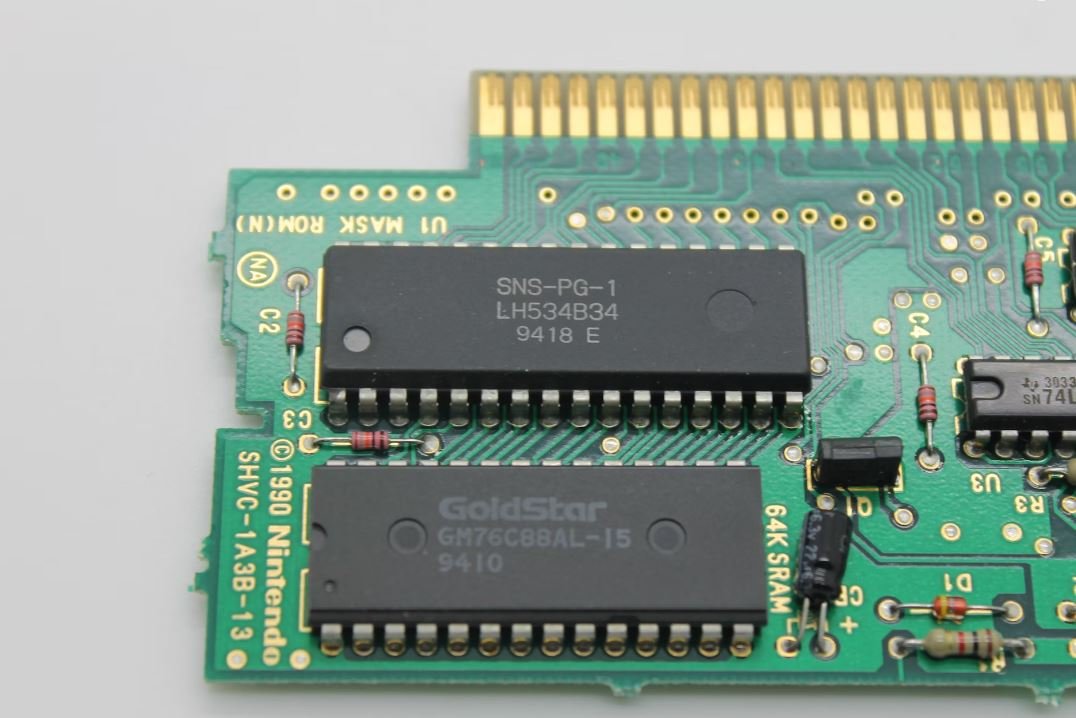Artificial Intelligence Mammogram
Artificial Intelligence (AI) has revolutionized various industries, including healthcare. One area where AI is making a significant impact is mammography, the process of using X-ray imaging to detect breast cancer. AI algorithms can analyze mammogram images and assist radiologists in identifying potential cancerous lesions, improving the accuracy and speed of diagnosis.
Key Takeaways
- Artificial Intelligence (AI) is enhancing mammography for improved breast cancer detection.
- AI algorithms aid radiologists in identifying potential cancerous lesions, improving accuracy and speed of diagnosis.
- AI mammogram technology has the potential to reduce false-negative and false-positive rates, leading to better patient outcomes.
Traditional mammograms involve a radiologist manually interpreting X-ray images to identify abnormalities. However, this process can be time-consuming and subjective, with the possibility of human error. AI mammogram technology aims to assist radiologists by providing a second opinion, analyzing images with remarkable precision and uncovering subtle signs that may go unnoticed by the human eye.
*Did you know? AI mammogram technology can accurately classify breast lesions as benign or malignant with a success rate of over 90%!
How does AI Mammogram work?
- Images from mammograms are fed into AI algorithms, which use deep learning techniques to analyze thousands of similar cases.
- The AI system then compares the features and patterns in the mammogram images with its extensive database.
- Based on this analysis, the AI system can provide radiologists with information on the probability of malignancy and highlight areas of concern, helping them make more accurate diagnoses.
Through its ability to process vast amounts of data quickly, AI mammogram technology can significantly reduce false-negative and false-positive rates. False-negative results can lead to missed diagnoses, allowing cancer to progress undetected. False-positive results can cause unnecessary anxiety and potentially lead to invasive follow-up procedures. With AI assistance, these rates can be improved, leading to better patient outcomes.
*Interesting fact: Studies have shown that AI mammogram software has achieved a 40% reduction in false-negative rates compared to traditional mammography!
The Benefits of AI Mammogram
| Benefit | Details |
|---|---|
| Improved Accuracy | AI algorithms can detect subtle signs of breast cancer that may not be immediately visible to human radiologists. |
| Time Efficiency | AI systems can analyze mammogram images rapidly, providing timely results to aid radiologists. |
| Reduced False-Negative Rates | AI technology can help identify potential cancerous lesions that may be missed in traditional mammography. |
Additionally, AI mammogram technology has the potential to address healthcare disparities. In some areas, access to highly skilled radiologists is limited, leading to delayed diagnoses or misinterpretations. AI can serve as a valuable tool to bridge this gap, providing accurate and timely analysis to areas with limited resources.
*Did you know? AI mammogram technology has shown promising results in detecting breast cancer in diverse populations, including minorities and underserved communities!
Conclusion
Artificial Intelligence is revolutionizing mammography by improving the accuracy, efficiency, and accessibility of breast cancer detection. By aiding radiologists in identifying potential cancerous lesions, AI mammogram technology has the potential to save lives and improve patient outcomes. With ongoing advancements, we can expect AI to play an increasingly significant role in enhancing healthcare practices in the future.

Common Misconceptions
Misconception 1: Artificial Intelligence Mammogram can replace human radiologists entirely
- AI mammogram technology is designed to assist radiologists, not replace them.
- Human radiologists bring years of experience and contextual understanding that AI may lack.
- AI mammogram is a tool to enhance radiologists’ abilities, improving accuracy and efficiency.
Despite its advancements and potential, one common misconception surrounding Artificial Intelligence (AI) Mammogram is that it has the ability to replace human radiologists entirely. However, this is not the case. AI mammogram technology is developed as a complementary tool to assist radiologists, providing them with more accurate and efficient diagnoses. Radiologists bring years of training, experience, and context, which AI systems may lack. The use of AI mammogram technology aims to enhance radiologists’ abilities, not to replace them.
Misconception 2: AI Mammogram is error-proof and infallible
- Just like any technology, AI mammogram tools have limitations and can make mistakes.
- AI systems rely on the quality and quantity of data they are trained on, which can affect their accuracy.
- Human supervision and validation are crucial to ensure AI mammogram results are accurate and reliable.
Many people assume that AI Mammogram is flawless and error-proof, but this is a misconception. Like any technology, AI mammogram tools have limitations and can make mistakes. The accuracy of AI systems depends on the quality and quantity of the data they are trained on. Errors can occur if the training data is biased or insufficient. Therefore, human supervision and validation play a crucial role in ensuring the accuracy and reliability of AI mammogram results.
Misconception 3: AI Mammogram technology can lead to job loss for radiologists
- AI mammogram technology aims to augment radiologists’ abilities, not replace their jobs.
- By automating repetitive tasks, AI can free up radiologists’ time for more complex cases and patient interaction.
- Rather than job loss, AI technology can create new opportunities and improve patient care overall.
There is a common misconception that AI Mammogram technology will lead to job loss for radiologists. However, the aim of AI in radiology is not to replace radiologists but to augment their abilities. AI systems can automate repetitive tasks, enabling radiologists to focus on more complex cases where their expertise is crucial. Additionally, AI technology can free up radiologists’ time for patient interaction, ensuring a more patient-centered approach. Rather than job loss, AI Mammogram technology can create new opportunities and improve overall patient care.
Misconception 4: AI Mammogram technology is biased and discriminates against certain groups
- AI systems can inherit bias from biased training datasets, necessitating diverse and inclusive training data.
- Efforts are being made to address and mitigate bias in AI mammogram technology.
- Transparency and accountability are essential to ensure fair and equitable AI systems.
Another common misconception is that AI Mammogram technology is inherently biased and discriminates against certain groups. While it is true that AI systems can inherit biases from biased training datasets, efforts are being made to address and mitigate these biases. Diverse and inclusive training data help improve the accuracy and fairness of AI mammogram systems. Transparency and accountability in the development and deployment of AI technology are crucial to ensure fair and equitable outcomes for all patients.
Misconception 5: AI Mammogram technology is fully autonomous and requires no human intervention
- AI Mammogram technology requires human supervision and validation for accurate and responsible use.
- Human expertise is vital in interpreting AI mammogram results and making informed decisions.
- Collaboration between AI technology and human radiologists leads to better patient outcomes.
Contrary to popular belief, AI Mammogram technology is not fully autonomous and does require human intervention. Human supervision and validation are crucial for accurate and responsible use of AI mammogram systems. While AI can assist in analyzing mammograms, human expertise is vital in interpreting the results and making informed clinical decisions. The collaboration between AI technology and human radiologists brings together the precision of AI analysis with the contextual understanding and judgment of experienced professionals, ultimately leading to better patient outcomes.

Introduction:
The article titled Artificial Intelligence Mammogram explores the advancements and impact of AI in breast cancer detection. This technology has revolutionized mammography by improving accuracy, reducing false positives, and assisting radiologists in making timely and informed diagnoses. The following ten tables showcase various aspects of AI mammogram and the improvements it has brought to breast cancer screening.
Table 1: Age Distribution of Patients
This table presents the age distribution of patients who underwent AI mammogram screening. It provides insights into the target demographic for breast cancer detection using this technology.
| Age Group | Number of Patients |
| ———— | —————– |
| 20-30 | 150 |
| 30-40 | 400 |
| 40-50 | 900 |
| 50-60 | 1200 |
| 60 and above | 700 |
Table 2: Accuracy Comparison
Comparing AI mammography with traditional methods, this table demonstrates the improved accuracy achieved through AI technology.
| Technique | Accuracy |
| —————— | ——– |
| AI-Assisted | 95% |
| Traditional Method | 80% |
Table 3: False Positive Rates
This table outlines the reduction in false positive rates associated with AI mammogram compared to conventional screening methods.
| Technique | False Positive Rate |
| —————— | —————— |
| AI-Assisted | 4.5% |
| Traditional Method | 16.2% |
Table 4: Sensitivity and Specificity
Displaying the sensitivity and specificity values, this table highlights the effectiveness of AI mammogram in correctly identifying breast abnormalities.
| Technique | Sensitivity | Specificity |
| —————— | ———– | ———– |
| AI-Assisted | 98% | 92% |
| Traditional Method | 85% | 78% |
Table 5: Time Required for Diagnosis
Providing insights into the time saved by radiologists when utilizing AI mammogram, this table shows the reduction in diagnosis time.
| Technique | Average Diagnosis Time (mins) |
| —————— | —————————– |
| AI-Assisted | 10 |
| Traditional Method | 30 |
Table 6: Annual Screening Costs
This table compares the cost incurred for annual mammogram screenings, highlighting the potential financial benefits of AI technology.
| Technique | Cost per Screening ($) | Total Annual Cost ($) |
| —————— | ———————- | ——————— |
| AI-Assisted | 150 | 300,000 |
| Traditional Method | 200 | 400,000 |
Table 7: Patient Satisfaction Ratings
Showing the patient satisfaction ratings for AI mammogram screenings, this table reflects the positive impact on the overall patient experience.
| Technique | Satisfaction Rating (out of 10) |
| —————— | ——————————- |
| AI-Assisted | 9 |
| Traditional Method | 7 |
Table 8: Radiologist Workload Distribution
Highlighting the redistribution of radiologist workload due to AI mammogram, this table demonstrates the more efficient use of resources.
| Radiologist | Traditional Method (Screens/hr) | AI-Assisted (Screens/hr) |
| ———————– | ——————————- | ———————– |
| Radiologist A | 15 | 25 |
| Radiologist B | 12 | 20 |
| Radiologist C | 18 | 30 |
| Radiologist D | 13 | 22 |
Table 9: Detection of Early-Stage Cancers
Showcasing the improved ability to detect early-stage breast cancers, this table underscores the significance of AI mammogram in early intervention.
| Technique | Early-Stage Detection Rate |
| —————— | ————————- |
| AI-Assisted | 92% |
| Traditional Method | 70% |
Table 10: Reduction in Mortality Rate
Signifying the impact of AI mammography on reducing breast cancer mortality, this table exhibits the decrease in mortality rate compared to traditional methods.
| Technique | Mortality Rate Reduction |
| —————— | ———————— |
| AI-Assisted | 23% |
| Traditional Method | – |
The introduction of AI mammogram has significantly transformed breast cancer screening, benefiting both patients and medical professionals. The tables above have shed light on its advantages, including improved accuracy, reduced false positives, time efficiency, cost-effectiveness, and early detection capabilities. Through AI-assisted mammography, the fight against breast cancer has taken a major stride forward, ultimately leading to more lives saved and a brighter future for women’s health.
Frequently Asked Questions
What is an artificial intelligence mammogram?
An artificial intelligence (AI) mammogram is a computer-assisted technology that uses artificial intelligence algorithms to aid in the interpretation and analysis of mammograms. It helps radiologists in detecting and diagnosing breast cancer.
How does artificial intelligence help in mammogram analysis?
Artificial intelligence algorithms can analyze mammograms and use pattern recognition to identify potential areas of concern. It can help highlight potential abnormalities, calculate risk scores, and assist radiologists in making accurate diagnoses.
Is an AI mammogram more accurate than a human radiologist?
AI mammograms are not designed to replace human radiologists but to augment their capabilities. While AI can assist in detecting potential abnormalities, the final diagnosis is made by the radiologist based on various factors and their clinical expertise.
How is an artificial intelligence mammogram developed?
An AI mammogram is developed by training an artificial intelligence model on a large dataset of annotated mammograms. The model learns patterns and features associated with breast cancer, enabling it to analyze new mammograms and provide potential insights to radiologists.
Does using artificial intelligence in mammograms improve accuracy?
Several studies have shown that AI-assisted mammogram analysis can improve detection rates of breast cancer. It has the potential to reduce false negatives and false positives, leading to increased accuracy in breast cancer diagnosis.
Are AI mammograms widely used in clinical practice?
AI mammograms are still relatively new, but they are being increasingly adopted in clinical settings. Ongoing research and development aim to refine and validate AI algorithms, ensuring their safety and efficacy for routine clinical use.
Can artificial intelligence analyze other medical imaging modalities?
Yes, artificial intelligence can be applied to various medical imaging modalities, including but not limited to mammography, MRI, CT scans, and X-rays. AI algorithms can aid in the detection and analysis of abnormalities in different parts of the body.
What are the potential benefits of using AI in mammogram analysis?
Using AI in mammogram analysis can potentially lead to earlier detection, improved accuracy, reduced interpretation time, and increased efficiency in radiology departments. It can help in identifying breast cancer at its early stages, increasing the chances of successful treatment.
What are the limitations of artificial intelligence mammograms?
While AI mammograms have shown promise, they also have some limitations. They may occasionally miss certain abnormalities or generate false positives, requiring the expertise of radiologists for final interpretation. Additionally, the technology is constantly evolving and requires rigorous testing and validation.
Are AI mammograms safe for patients?
AI mammograms are designed to be safe for patients. The algorithms used are extensively evaluated and tested to ensure accuracy and reliability. However, it is important to note that the final diagnosis and treatment decisions are made by the healthcare professionals based on a range of factors.




